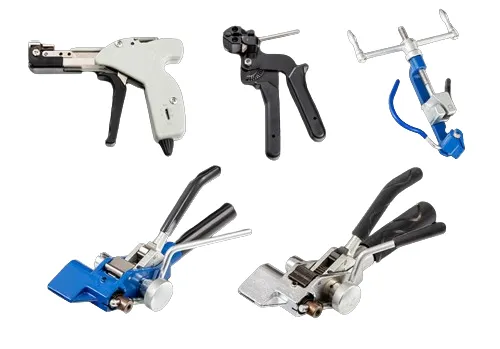
-
 Afrikaans
Afrikaans -
 Albanian
Albanian -
 Amharic
Amharic -
 Arabic
Arabic -
 Armenian
Armenian -
 Azerbaijani
Azerbaijani -
 Basque
Basque -
 Belarusian
Belarusian -
 Bengali
Bengali -
 Bosnian
Bosnian -
 Bulgarian
Bulgarian -
 Catalan
Catalan -
 Cebuano
Cebuano -
 Corsican
Corsican -
 Croatian
Croatian -
 Czech
Czech -
 Danish
Danish -
 Dutch
Dutch -
 English
English -
 Esperanto
Esperanto -
 Estonian
Estonian -
 Finnish
Finnish -
 French
French -
 Frisian
Frisian -
 Galician
Galician -
 Georgian
Georgian -
 German
German -
 Greek
Greek -
 Gujarati
Gujarati -
 Haitian Creole
Haitian Creole -
 hausa
hausa -
 hawaiian
hawaiian -
 Hebrew
Hebrew -
 Hindi
Hindi -
 Miao
Miao -
 Hungarian
Hungarian -
 Icelandic
Icelandic -
 igbo
igbo -
 Indonesian
Indonesian -
 irish
irish -
 Italian
Italian -
 Japanese
Japanese -
 Javanese
Javanese -
 Kannada
Kannada -
 kazakh
kazakh -
 Khmer
Khmer -
 Rwandese
Rwandese -
 Korean
Korean -
 Kurdish
Kurdish -
 Kyrgyz
Kyrgyz -
 Lao
Lao -
 Latin
Latin -
 Latvian
Latvian -
 Lithuanian
Lithuanian -
 Luxembourgish
Luxembourgish -
 Macedonian
Macedonian -
 Malgashi
Malgashi -
 Malay
Malay -
 Malayalam
Malayalam -
 Maltese
Maltese -
 Maori
Maori -
 Marathi
Marathi -
 Mongolian
Mongolian -
 Myanmar
Myanmar -
 Nepali
Nepali -
 Norwegian
Norwegian -
 Norwegian
Norwegian -
 Occitan
Occitan -
 Pashto
Pashto -
 Persian
Persian -
 Polish
Polish -
 Portuguese
Portuguese -
 Punjabi
Punjabi -
 Romanian
Romanian -
 Russian
Russian -
 Samoan
Samoan -
 Scottish Gaelic
Scottish Gaelic -
 Serbian
Serbian -
 Sesotho
Sesotho -
 Shona
Shona -
 Sindhi
Sindhi -
 Sinhala
Sinhala -
 Slovak
Slovak -
 Slovenian
Slovenian -
 Somali
Somali -
 Spanish
Spanish -
 Sundanese
Sundanese -
 Swahili
Swahili -
 Swedish
Swedish -
 Tagalog
Tagalog -
 Tajik
Tajik -
 Tamil
Tamil -
 Tatar
Tatar -
 Telugu
Telugu -
 Thai
Thai -
 Turkish
Turkish -
 Turkmen
Turkmen -
 Ukrainian
Ukrainian -
 Urdu
Urdu -
 Uighur
Uighur -
 Uzbek
Uzbek -
 Vietnamese
Vietnamese -
 Welsh
Welsh -
 Bantu
Bantu -
 Yiddish
Yiddish -
 Yoruba
Yoruba -
 Zulu
Zulu


Nov . 07, 2024 22:47 Back to list
Affordable Prices for Lever Hoists and Their Features
Understanding Lever Hoist Prices A Comprehensive Guide
When it comes to lifting heavy loads in various industries, lever hoists are essential tools that provide efficiency and safety. These manual devices are designed to lift, lower, and pull heavy objects using simple mechanical principles. As businesses and individuals seek reliable ways to handle heavy lifting tasks, understanding the pricing factors associated with lever hoists becomes crucial.
What is a Lever Hoist?
A lever hoist, also known as a lever block, consists of a hand-operated lever, a pulley system, and a lifting chain. The user operates the lever to lift or move objects by applying force. The design of the lever provides a mechanical advantage, making it easy to lift significant weights with minimal effort. Lever hoists come in various capacities, typically ranging from 0.5 tons to over 6 tons, catering to different lifting needs.
Factors Influencing Lever Hoist Prices
1. Capacity and Size One of the primary factors influencing the price of a lever hoist is its lifting capacity. Higher capacity hoists are typically more expensive due to their robust construction and the materials used. The size of the hoist generally correlates with its lifting capability, and larger models can handle heavier loads, thus costing more.
2. Construction Material Lever hoists are usually made from steel or aluminum. Steel models are sturdier, making them suitable for heavy-duty applications, while aluminum models are lightweight and portable, ideal for less demanding tasks. The choice of material significantly impacts the price; steel hoists tend to be more expensive due to their durability.
3. Brand Reputation The brand of the lever hoist can also greatly affect the price. Established brands with a reputation for quality and reliability tend to charge more for their products due to the trust they have built with customers. Conversely, lesser-known brands may offer more affordable options, although the quality and durability may vary.
lever hoist price

4. Features Modern lever hoists come equipped with various features such as safety mechanisms, ergonomic designs, and enhanced lifting capacities. Hoists with advanced features, such as automatic brakes or adjustable lifting speeds, can significantly increase the price. Buyers need to consider which features are necessary for their specific applications.
5. Market Demand Like any other product, the price of lever hoists can be influenced by market demand. During peak construction and manufacturing seasons, the demand for lifting equipment typically rises, leading to potential price increases.
6. Region and Availability Prices can also vary by region, influenced by local market conditions, the availability of hoists, and transportation costs. Areas with high demand for lifting equipment may see higher prices due to increased competition.
Average Price Range
On average, lever hoists can range from approximately $100 to $600 or more, depending on the factors mentioned above. Entry-level models might start at around $100 to $200, while mid-range options typically fall between $200 to $400. High-end hoists with advanced features or larger capacities can exceed $600.
Conclusion
When contemplating the purchase of a lever hoist, it is essential to consider the various factors that contribute to its price. Understanding these elements will help individuals and businesses make informed decisions, ensuring they choose the right hoist for their needs without overspending. By evaluating factors such as capacity, construction material, brand reputation, and additional features, buyers can find a lever hoist that offers the perfect balance of quality and affordability, ultimately enhancing their lifting and material handling capabilities. As always, considering safety, reliability, and efficiency is paramount when selecting the right hoisting equipment.
Latest news
What Are Construction Tools and How Are They Used?
NewsJul.11,2025
Professional-Grade Duct Rodding Tools for Superior Cable Installation
NewsJul.11,2025
Enhancing Safety and Efficiency with Modern Hot Stick Solutions
NewsJul.11,2025
Empowering Cable Installation with Advanced Rodder Solutions
NewsJul.11,2025
Elevate Your Cable Installation Projects with Cable Pulling Tools
NewsJul.11,2025
Efficient Cable Handling Solutions: Cable Rollers for Sale
NewsJul.11,2025











